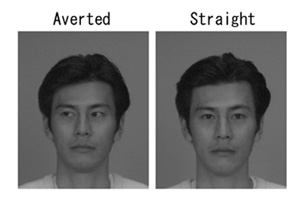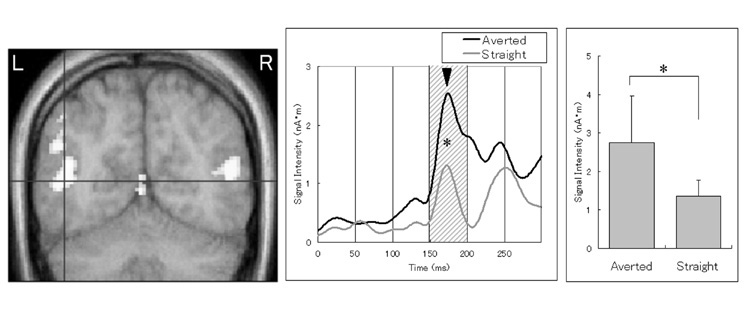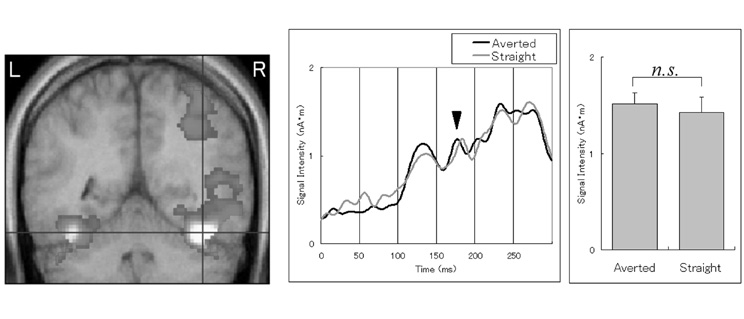SATO Wataru Laboratory
Time course of superior temporal sulcus activity in response to eye gaze: A combined fMRI and MEG study
(Sato, W., Kochiyama, T., Uono, S. & Yoshikawa, S.: Soc Cogn Affect Neurosci)
The human superior temporal sulcus (STS) has been suggested to be involved in gaze processing, but temporal data regarding this issue are lacking.
We investigated this topic by combining fMRI and MEG in four normal subjects.
Photographs of faces with either averted or straight eye gazes were presented and subjects passively viewed the stimuli.

First, we analyzed the brain areas involved using fMRI.
A group analysis revealed activation of the STS for averted compared to straight gazes, which was confirmed in all subjects.
We then measured brain activity using MEG, and conducted a 3-D spatial filter analysis.
The STS showed higher activity in response to averted versus straight gazes during the 150-200 ms period, peaking at around 170 ms, after stimulus onset.

In contrast, the fusiform gyrus, which was detected by the main effect of stimulus presentations in fMRI analysis, exhibited comparable activity across straight and averted gazes at about 170 ms.

These results indicate involvement of the human STS in rapid processing of the eye gaze of another individual.
Return to
Recent Research.
Return to
Main Menu.


